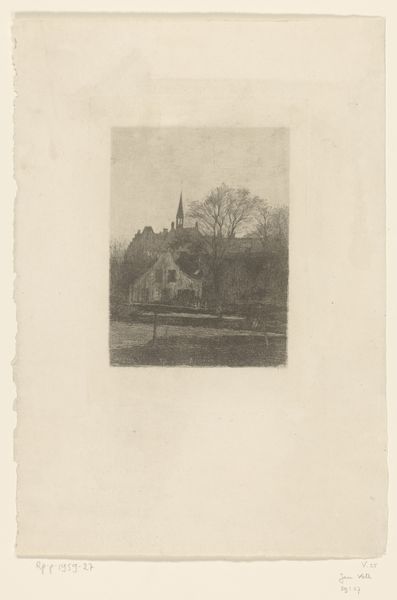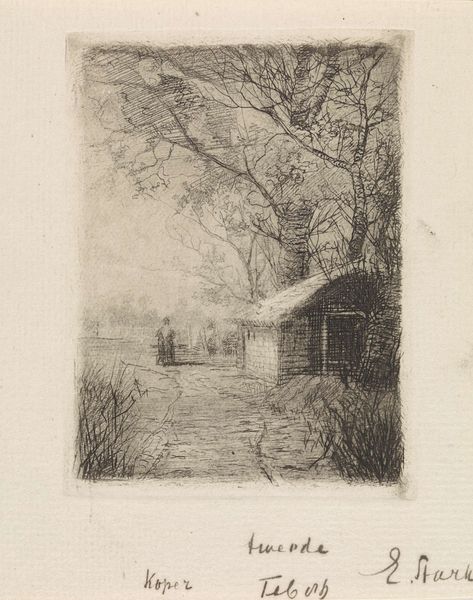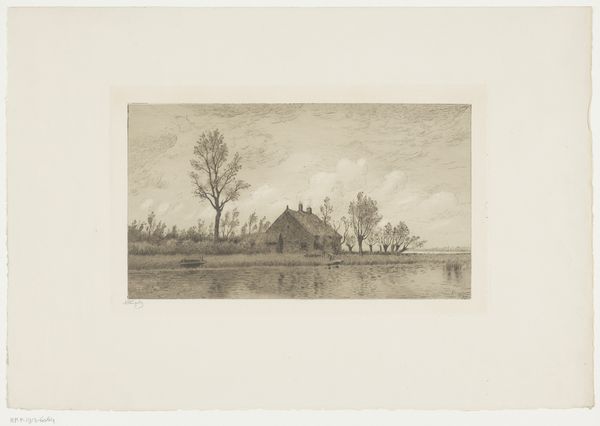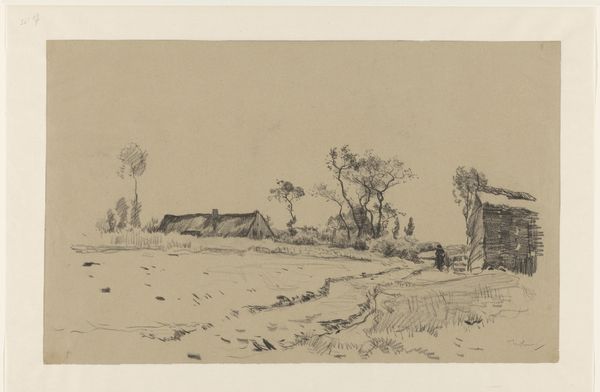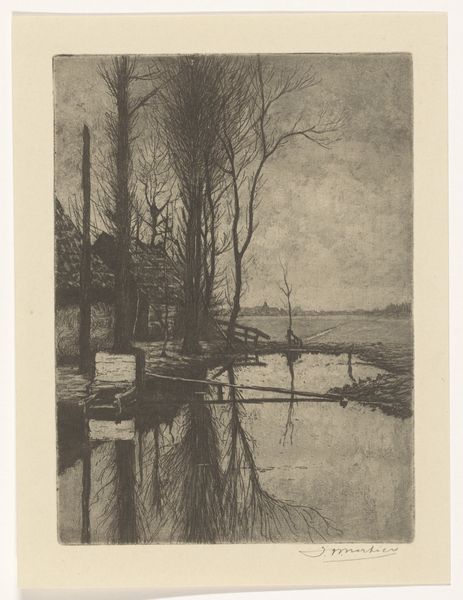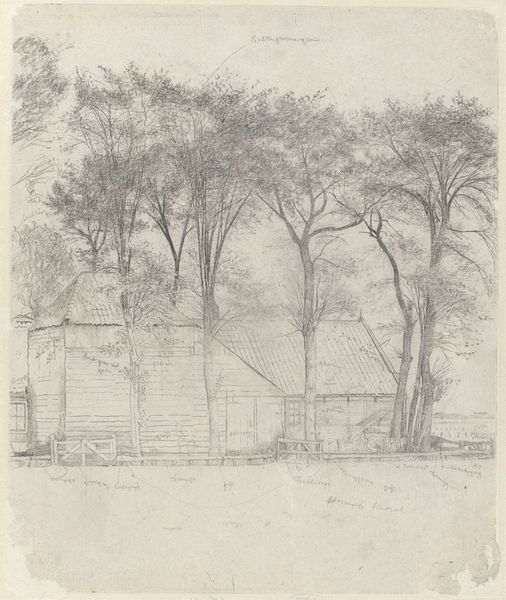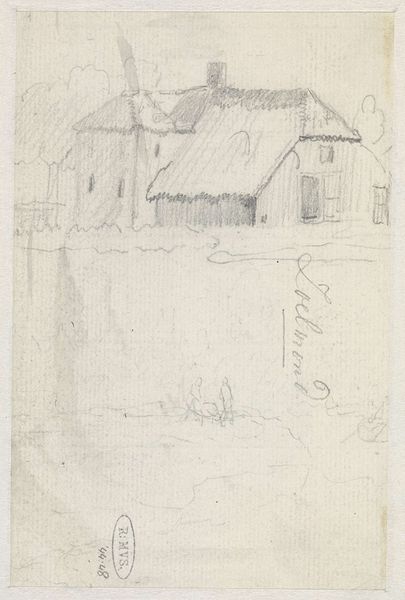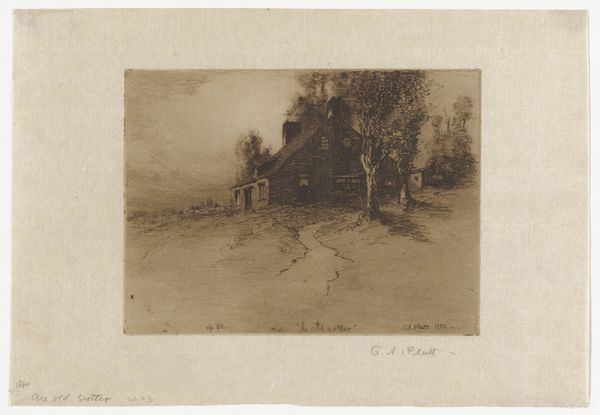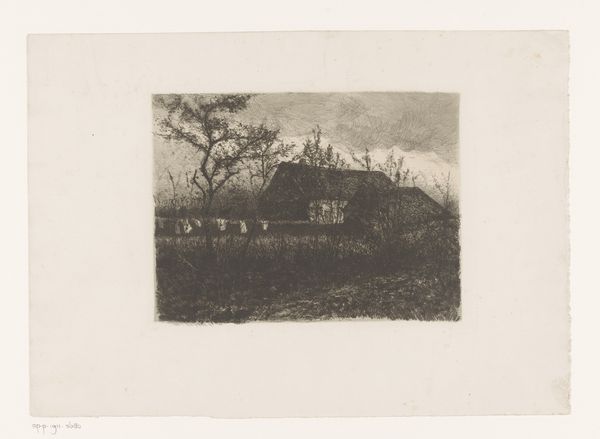
print, etching
#
dutch-golden-age
# print
#
etching
#
landscape
#
etching
#
realism
Dimensions: height 219 mm, width 119 mm
Copyright: Rijks Museum: Open Domain
Curator: There's a melancholic beauty in this etching. “Boerderij bij avond”, or “Farmhouse at Evening,” by Willem Witsen, made around 1882 to 1884, offers a glimpse into the Dutch countryside. Editor: It's certainly muted. Somber even, with its delicate lines. The composition is interesting – this small farmhouse under an expanse of sky... it feels so solitary. Curator: The solitariness speaks volumes, doesn't it? The thatched roof of the farmhouse dominates the immediate foreground, anchoring us, and reminding us of Dutch Golden Age landscapes, echoing those artists' embrace of realism. Editor: How does it resonate politically or socially, this rather unassuming farmhouse? Is there more than meets the eye, beyond the simple bucolic scene? Curator: Well, realism was itself a socio-political choice for artists at this time. Representing the lives and environments of ordinary people offered a counterpoint to more idealized or allegorical subjects popular with the elites. Editor: That's intriguing. This work is so muted it has a powerful understated quality, almost a subversive peacefulness. It resists the heroic. Is it rejecting something by choosing such an intimate setting? Curator: Witsen moved among literary and artistic circles of the time who valorized intimacy as well as technical experimentation with printmaking –etching especially offered a way to suggest atmosphere and shadow. He captured fleeting effects of light here as night begins to settle in this small, rural spot. Editor: The bare trees against the darkening sky seem almost mournful, perhaps the loss of the rural as the cities grew in the late 19th century. It almost embodies the anxieties of industrializing society. Curator: A poignant thought. While he may not be overtly critiquing societal shifts, Witsen seems deeply attuned to the emotional resonance of this landscape – its capacity to reflect our own inner states. It has a nostalgic and introspective air. Editor: Indeed. "Farmhouse at Evening" then becomes less about rural life itself, and more a stage for us to project our own reflections on what it means to find home, stability, perhaps even a lost peace. Thank you for sharing those thoughts! Curator: My pleasure, this etching speaks with remarkable eloquence. It prompts us to contemplate how art becomes more than an image, an imprint of history as well as a repository of cultural memory.
Comments
No comments
Be the first to comment and join the conversation on the ultimate creative platform.
